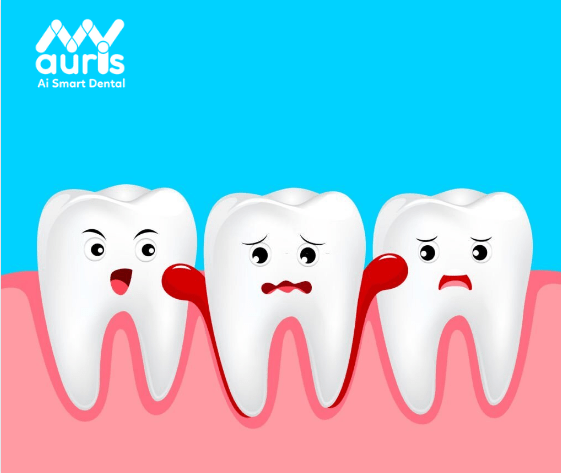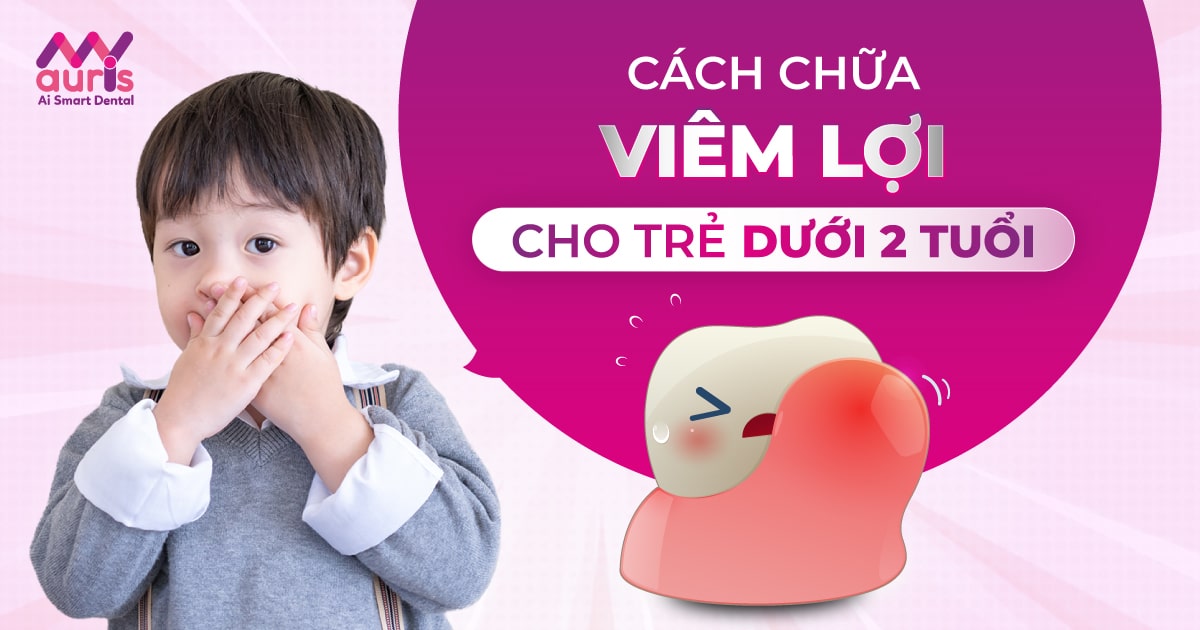How to treat gingivitis in children under 2 years old and how to handle it? However, gingivitis is a common oral disease in children and most of them experience it at least once during their adulthood. This is not a dangerous disease, you can apply some home remedies such as salt water, lemongrass essential oil, etc., which can effectively overcome these symptoms.
Causes of gingivitis in children under 2 age
Gingivitis is a common disease in young children, especially at the age of 2 years. There are many different levels of this disease, making the baby uncomfortable leading to anorexia, crying and physical weakness, etc. There are many causes of gingivitis in children such as long-term plaque accumulation, poor oral hygiene is also the cause of bacteria damaging the child’s gums.

Gingivitis in children is divided into 2 levels level: light level and heavy level
Light level
- Gingivitis due to teething: Gingivitis due to teething is the main cause of gingivitis in children aged about 2 – 5 years. This is a temporary condition while the child grows permanent teeth. However, in bad cases, gingivitis can affect the child’s tooth structure and destroy tooth enamel.
- Gingivitis due to trauma: The cause of this condition is due to mechanical trauma to the gums such as teeth or gums being impacted such as the habit of chewing hard foods or biting toys or nails,..
- Herpes bacteria: Gingivitis caused by bacteria Herpes mainly occurs between the ages of 2 and 5 years old. This stage will progress over 2 weeks, however some cases cause complications that affect the brain.
Severity level
Gingivitis in children under 2 years old can stem from side effects of medications such as immunosuppressants, blood pressure medications, and medications. anti-seizure, etc. The ingredients in this medicine can reduce salivation, thereby causing plaque around the teeth to not be cleaned and causing bacteria to increase, causing gingivitis.
In addition, the diseaseNeutropenia is also the cause of gingivitis in 2-year-old children. At this time, the baby’s gums show signs of inflammation and damage quickly. This is a sign of serious disease, so parents should take their children to see a dentist for timely treatment.
Stages of gingivitis
Besides, gingivitis is divided into 2 stages:
First stage
Red, swollen gums can easily bleed, especially when teaching children to brush their teeth. Therefore, when this sign appears, parents need to go to a dentist for early treatment so that this condition will heal quickly.
The second stage
The period of inflamed gums. When food easily accumulates in the roots of teeth and is not cleaned daily, it can lead to infection. Signs include red, swollen gums, bleeding, pain, swollen cheeks and bad breath. If food gets caught between the teeth, in addition to causing complications of gingivitis, it also leads to complications of tooth decay, pulpitis, and periapical inflammation.
However, complications that affect the child’s gums include:
- Children’s gums bleed easily, the child’s mouth develops a foul odor, thereby reducing resistance and lacking vitamin C in the gums
- Gingivitis in children affects the quality of tooth enamel, causing discolored teeth and easily causing tooth decay.
How to treat gingivitis for children under 2 age
To prevent gingivitis, a simple way at home is to guide children in oral care. However, for cases that are not too serious, parents do not need the intervention of Western medicine. Below are some ways to treat gingivitis for children under 2 years old:
Oral hygiene for children
Children under 2 years old, at this age children are not aware of the importance of daily oral hygiene. Therefore, parents should create a habit for their children to brush their teeth every day and rinse their mouth from a young age.

However, when parents clean their children’s teeth, they should be careful not to use toothbrushes.Strongly impact the child’s teeth and gums because of this age. Instead, you can use a tongue scraper to scrub around your baby’s teeth and remove plaque. Oral cleaning time lasting 2 – 3 minutes is best.
For children with gingivitis who have signs of swollen gums, parents should avoid cleaning the gums at that location and instead gargle with salt water to reduce pain and improve gingivitis.
Rinking mouth with salt water for children
This method is recommended by doctors for safe use and does not cause side effects for babies. Because the salt component has high antiseptic properties, it helps heal damage caused by gingivitis.
However, children under 2 years old do not know how to gargle with salt water and need their parents’ help. Therefore, you can use a gauze pad then soak it with salt water to clean your child’s teeth, gums and palate. In addition, you can use physiological saline or boiled salt water to gargle your child’s mouth, up to twice a day.
Roll your child’s tongue
Because gingivitis can occur due to bacteria or oral fungus existing on the tongue. Signs of fungus are plaque in the baby’s mouth, which can cause ulcers and damage the child’s tooth and gum structure. At the same time, gargle with salt water, you can use gauze to loosen the child’s tongue. This way will help prevent oral fungus that causes gingivitis in children under 2 years old.
How to prevent gingivitis in children under 2 years old
Some simple home remedies to help prevent gingivitis in children under 2 years old, specifically:
- Care for children’s teeth with salt water and do it twice a day, about 2 – 3 minutes each time.
- Remove leftover food from between teeth for children
- Limit giving children snacks such as sweets containing a lot of sugar every evening before going to bed.
- Use a soft-bristled toothbrush and replace it regularly every 2-3 months.
- Designing a healthy and scientific diet for children under 2 years old. Especially do not let children eat too much junk food and foods containing a lot of sugar because they are the main cause of plaque on teeth leading to tooth decay in children.
- Get your child’s oral health checked periodically and regularly twice a year.

Above is all useful information about gingivitis as well as how to treat gingivitis for children under 2 years old. From there, it will help you recognize the signs of gingivitis as well as the severity or severity of the disease, helping you have a timely treatment plan. If you have any questions or concerns regarding dental diseases in children, don’t hesitate to contact us for detailed answers!
Kim Dung





